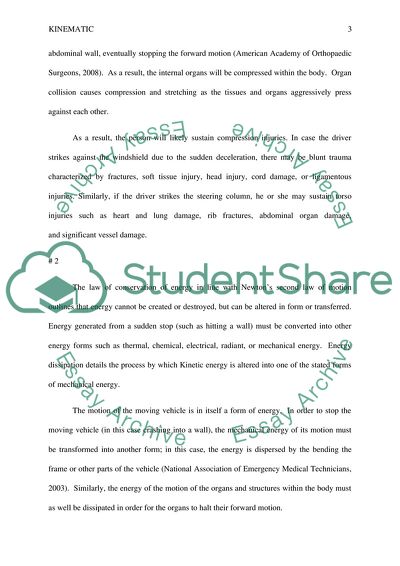Kinematic ( pls the order instrucions) Essay Example | Topics and Well Written Essays - 500 words. https://studentshare.org/medical-science/1780603-advanced-assessment-and-treatment-of-trauma
Kinematic ( Pls the Order Instrucions) Essay Example | Topics and Well Written Essays - 500 Words. https://studentshare.org/medical-science/1780603-advanced-assessment-and-treatment-of-trauma.


